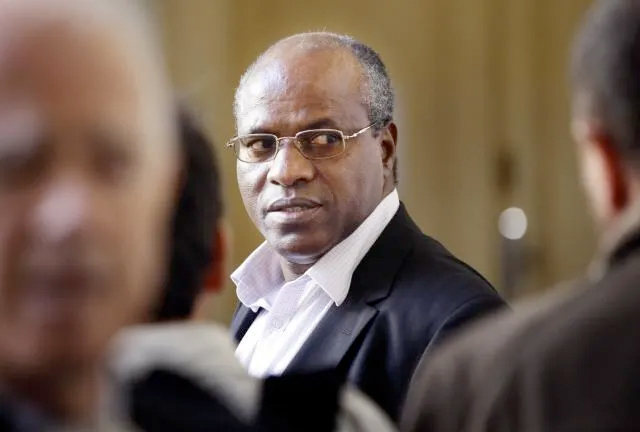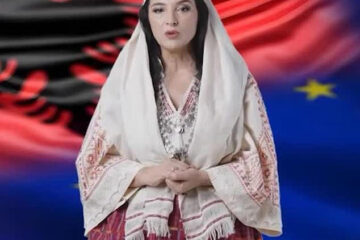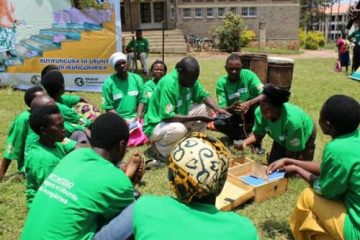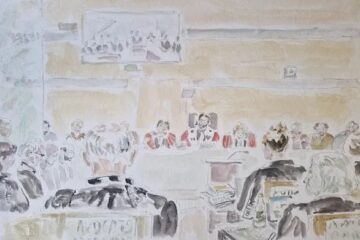As the historic trial of Dr. Sosthène Munyemana nears its conclusion, the Paris Criminal Court continues to navigate between justice, memory, and the burden of truth. Over weeks of hearings, the chamber has revisited the events of 1994 in Rwanda, when nearly a million Tutsi were exterminated. The case, unfolding three decades later, still exposes wounds that time has not closed.
The morning session opened with the reading of documents submitted by the defense, including the statement of Witness A (for the accused), the spouse of a local agronomist in Tumba. Her words portrayed a community torn apart by fear and uncertainty. She recalled fleeing Butare in July 1994 with her husband, later abducted by uniformed men she believed to be from the Rwandan Patriotic Front.
She described Dr. Munyemana as “a man who tried to protect,” claiming that he intervened to stop killers and offered refuge to those in danger. A long-time colleague and neighbor, she insisted that “he had a human attitude” and “faced threats for defending others.” According to her, the sector office where civilians gathered “was not a prison but a shelter,” and patrols in the area sought to deter attacks.
Another testimony, that of Witness B (for the accused), a former political figure, painted Munyemana as a reform-minded intellectual, active in the democratic opposition of the early 1990s. He described the accused as “a moderate voice who condemned massacres and opposed extremist factions,” calling him “one of the rare democrats who paid a high price for his stance.”
To reinforce its case, the defense also introduced readings from historians and human-rights reports, works by André Guichaoua, Alison Des Forges, and excerpts from Kangura and Human Rights Watch. These were meant to contextualize the chaos of 1994 and to highlight what the defense called “a climate of false denunciations” after the genocide. Their objective: to challenge the reliability of accusations that emerged amid Rwanda’s post-war turmoil.
The tone shifted when the civil parties took the floor.
Maître Paruelle, representing the Rwandan Community of France, reminded the court that “the time of genocide was not an ordinary time, what was unimaginable became real.” He urged the jury to see beyond documents and abstractions: “Justice is rendered not only for the dead but for the living who still carry the silence of their loss.”
Maître Sabrina Goldman, speaking for LICRA, emphasized the universal dimension of the crime: “The genocide against the Tutsi wounded humanity itself. A crime of this scale is never individual, yet each participant bears personal responsibility.”
Maître Mathilde Aublé, representing Ibuka, denounced what she called “a screen of smoke” raised by the defense. According to her, evidence showed that Munyemana “held the key to the sector office” where dozens of Tutsi had been confined before being executed. “How can we still say they went there voluntarily?” she asked. “He was not merely a bystander; he was part of the machinery that decided their fate.”
Her colleague, Maître Rachel Lindon, spoke with emotion about the imbalance of justice and remembrance: “For the defense, there is a genocide but without génocidaires. It is our duty to reject that narrative.” She condemned the symbolic insult of token reparations and ended on a note that stilled the courtroom: “Between the past of our memories and the future of our hopes for justice, our dead will not return.”
The following day, Prosecutor Bernardo delivered his closing arguments. Calm yet forceful, he began by defining genocide as “a crime that wounds humanity itself, a crime that must be punished to restore meaning to justice.” He reminded jurors that the case was built not on one perfect proof but on “the convergence of testimonies.”
“The only proof,” he said, “is the recoupment of all proofs, what we call intimate conviction.” Reconstructing the events of 1994 in Tumba, he placed Munyemana at the center of local coordination: present at meetings, linked to patrols, and identified by several witnesses as having authority over those who organized barriers.
He reviewed over sixty testimonies heard during the proceedings, asserting, “Their constancy outweighs the contradictions of the defense.” Some defense witnesses, he said, appeared “confused or influenced,” while others “seemed to repeat the rhetoric of denial.”
The prosecutor dismissed claims of political persecution, insisting that the accused “was not a victim of circumstances but an active participant in them.” He cited letters and records showing Munyemana’s involvement with a faction of the MDR that supported the interim government during the genocide.
When referring to the accused’s later life in France, Bernardo’s tone hardened: “For thirty years, he lived freely, built a career, and raised a family; privileges his victims were denied.”
He concluded by requesting the maximum penalty: life imprisonment. “For so many victims,” he said, “justice has a price. The measure of this crime can only be the measure of eternity.”
As the session ended, the courtroom fell into silence. The faces of survivors, defense lawyers, and observers reflected fatigue and contemplation more than triumph. Between the image of a compassionate doctor and that of a man complicit in horror, the court now faces the daunting task of discerning truth through layers of pain, memory, and history.
Whatever the verdict, the trial of Dr. Sosthène Munyemana already stands as a mirror of how nations remember, how justice endures, and how humanity continues to search for meaning after its darkest hour.








